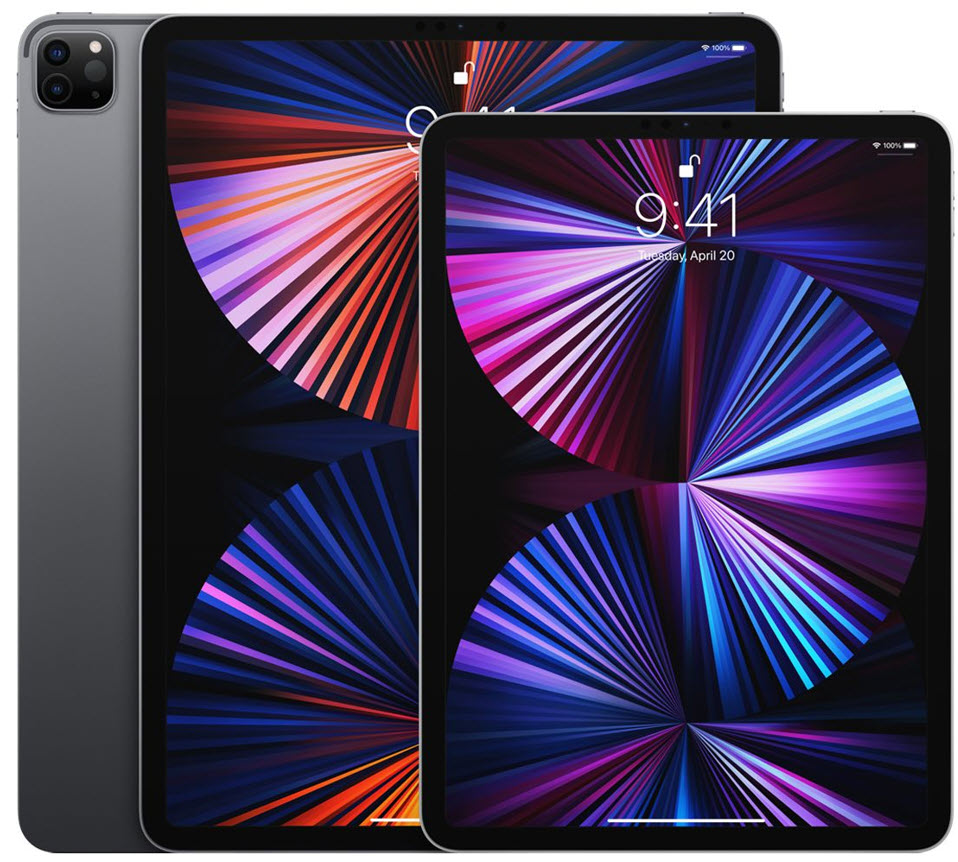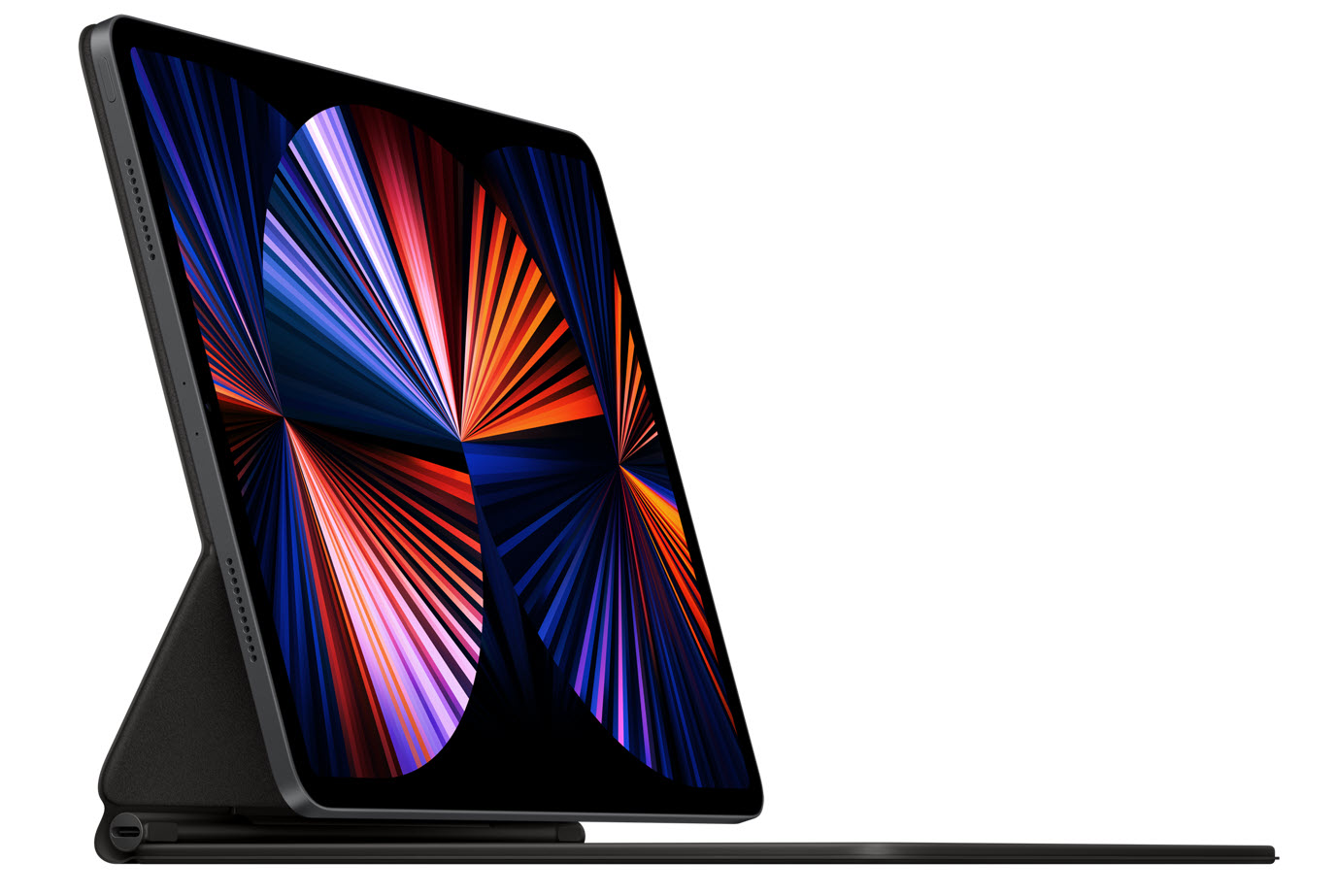Apple’s iPad Pro can drive miniLED display growth in 2021 and beyond. It could start a new wave of demand for miniLED-based IT products (tablets, notebooks and monitors). MiniLED TVs introduced by Samsung, LGE, TCL and others at the beginning of 2021 have already started expectations of growth. Apple’s miniLED-based iPAD Pro will strengthen this growth opportunity as other suppliers will follow.
MiniLED-based displays were introduced in 2018, but trade issues in 2019, and the global pandemic in 2020 have delayed suppliers’ expansion plans and product introductions. Suppliers are now starting to increase capacity and investment. With top consumer brands such as Apple, Samsung, LGE and others introducing miniLED-based products in 2021 for multiple applications, the technology is expected to enter an expansion phase.
Enables Higher Display Performance
Apple’s iPad Pro model which was updated in April 2021 with a faster M1 chip, 5G connectivity and 12.9″ liquid Retina XDR display with a miniLED backlight brought very high performance to the tablet market. It has 1000 cd/m² max full screen brightness, 1600 cd/m² peak brightness (HDR) and 1,000,000:1 contrast ratio.
According to Apple: to achieve this extremely high brightness they used an array of LEDs across the entire back of the display, based on custom designed miniLEDs that are 120 times smaller in volume than the previous generations. And custom optical films and diffusers mix the light more efficiently so it can fit in a design that‘s just 6.4mm thick. Apple has used over 10,000 miniLEDs that are grouped into more than 2500 local dimming zones. Depending on the content, the brightness in each zone can be precisely adjusted to achieve 1,000,000:1 contrast ratio. The 1600 nits peak brightness (>2500 dimming zones) is higher than the miniLED-based gaming monitor from Acer and Asus with 1400 nits peak brightness (1152 dimming zones). The 12.9-inch miniLED-based iPad Pro price starts at $1099, which is $100 more than the previous model.
MiniLED backlight technology can enable LCDs with very high contrast ratio, ultra high brightness, better HDR (High Dynamic Range), thinner form factors and lower power consumption to compete directly with OLED in the high-end display application market.
 The iPad Pro. Image:Apple
The iPad Pro. Image:Apple
Can Compete with OLED
Samsung, Lenovo and others have already introduced tablets with OLED displays. Apple introducing miniLED-based display for tablets (after completely switching to OLED for smartphones) gives a strong vote of confidence for this technology.
OLED has secured a strong presence in the premium TV and smartphone market because of its high picture quality, design differentiation, ‘perfect’ black and an infinite contrast ratio. OLED can have a true black state and excellent contrast being an emissive display, but to achieve >1000nits it requires relatively high current which can negatively impact the lifetime. Generally OLED has an inverse relationship with luminance and lifetime. Companies are using pixel-shifting algorithms to reduce the impact of burn-in. LCDs can achieve >1000 nit brightness by increasing the number of LEDs but contrast ratio is very limited. MiniLED can resolve these issues. MiniLEDs with multi-zone blinking backlights can work as an alternative for higher HDR with >100000:1 contrast ratio and higher peak brightness. For HDR, pixel level dimming is best which is possible with microLED technology.
Different from MicroLED
MiniLEDs are very different from MicroLEDs in terms of manufacturing process. While MicroLEDs are new self–emissive displays, MiniLEDs are evolutionary technology that can empower LCD backlights for many applications (high-end tablet, notebooks, monitors, TV, auto display, VR and others). MiniLED can also be used as a direct-lit RGB LED for commercial applications like digital signage. MicroLED display still needs a technology breakthrough in mass transfer, higher manufacturing yield and significant capital investments to commercialize. However, miniLEDs can use existing fabs without major investments and products are already commercialized.
Potential for Lower Costs
MiniLED has a similar architecture to current conventional LED backlighting. It can use current equipment and manufacturing processes with minimal change. According to suppliers, miniLED costs are still high, but it does not need a big infrastructure change and the manufacturing challenges are not that high. Cost reductions are expected in the future.
In size, miniLEDs are generally 100 to 200 microns along the edge; and traditional LEDs are generally larger than 300 microns. With smaller sized LEDs, a higher number of chips will be needed. It can benefit players in the entire supply chain (LEDs, backlights, other components, panels and devices) with increased sales and higher profits. There are still many issues such as pick and place production, bonding, manufacturing yield, heat dissipation and the right balance of chip size, numbers and cost efficiency. With an improved supply chain and established players and production capabilities there are higher opportunities to scale production with increased demand. MiniLED still faces cost challenges to become competitive. With Apple’s introduction in tablet and IT products, more brands are expected to follow. In the near term, suppliers are focusing more on value-based applications such as high-end tablet, notebook, gaming monitor, TV, automotive and VR.
The shift from CCFL backlights to LED helped the LCD market transformation in the past. MiniLED backlights also have the potential to create a similar transformation, if they can match cost, production volume and technology requirements. Already major LCD capacity is available for various sizes and types of display applications. It will open up new opportunities for LCD industry.
Supply Chain Evolving and Improving
MiniLED supply chain companies such as BOE, China Star, AUO, Innolux, Epistar, Sanan, Lextar, Macroblock, ASM Pacific Technology, Nationstar, Refond, Yenrich, and many others are all working to develop better solutions. Consumer electronics companies are also joining in the collaboration and development. A joint venture between Epistar and Lextar created Ennostar Inc at the beginning of this year. Epistar will focus on LED epitaxy and chip, and Lextar will focus on packaging and modules. Lextar recently released Chip-on-board (COB) technology that uses miniLED flip chips on a light board for ultra thin design and driver–on-board (DOB) technology integrating driver, microcontrollers, TCon and power components for more integrated design solutions.
Major LED chip companies such as Epistar and Sanan have increased their capital expenditure to increase capacity. Equipment suppliers such as Kulicke & Soffa and AMSPT are focusing on high-speed transfer and bonding while suppliers such as FitTech, Saultech are providing sorting and testing equipment. K&S and Rohinni have co-developed miniLED placement solutions. Rohini recently announced its new composite bondhead which combines its high-speed system with a new design that will allow multiple bondheads to run in parallel increasing speed and accuracy. Driver IC companies such as Taiwan’s Macroblock are focusing on miniLED products this year. Panel suppliers are collaborating with their LED subsidiaries: AUO with Lextar and Innolux with AOT and other companies. LED chip company Sanan is working with Samsung, while BOE has a joint venture with Rohinni. MiniLED capacity is expanding.
Strong IT demand
According to an IDC press release in February 2021, (Worldwide Tablet Shipments Return to Growth in 2020, Fueled by Unprecedented Demand, According to IDC) worldwide tablet shipments returned to growth in 2020, fuelled by unprecedented demand. Impacted by the pandemic, the tablet market reached shipments levels not seen since the fourth quarter of 2017. Apple continued to lead the tablet market with a 36.5% shipment market share and 19.5% year over year growth in Q420 (IDC).
Strategy Analytics said in April 2021 (Strategy Analytics: Tablet Market Growth Hits 8-Year High as Work-from-Home Trend Entrenches), “tablet market growth hits 8-years high as the work-from-home trend entrenches”. Apple, Samsung, Lenovo and Amazon all posted strong tablet results in Q1 2021. As per Strategy Analytics data, Apple was the top brand with 36.7% shipment share followed by Samsung with 18.1% share in Q1 2021. According to IDC’s March 2021 data, “In 2020, PC shipments grew 12.9%; this momentum is expected to carry forward into 2021 as IDC forecasts 18.2% growth for the traditional PC market with shipments reaching 357.4 million this year. Looking further ahead IDC’s outlook remains stronger than historical levels with a compound annual growth rate (CAGR) of 2.5% for the 2020-2025 forecast period”.
Implications
Apple is reported to be planning to release more miniLED products by the end of 2021 including 14″ and 16″ MacBook Pro models. Apple’s adoption of miniLED technology will have a very positive impact on the supply chain and growth potential. Already Acer, Asus, Lenovo and MSI have released gaming monitors and notebooks with MiniLED backlights. More suppliers are expected to follow with new MiniLED0based products.
MiniLED-based products by enabling LCDs with higher performance, thinner form factors and lower power consumption to compete with OLED can drive replacement demand with higher specs. MiniLED-based products are poised for expanded market presence. Success will depend on the technology’s ability to reduce cost to drive demand. (SD)
Sweta Dash is the founding president of Dash-Insights, a market research and consulting company specializing in the display industry. For more information, contact [email protected] or visit www.dash-insights.com


